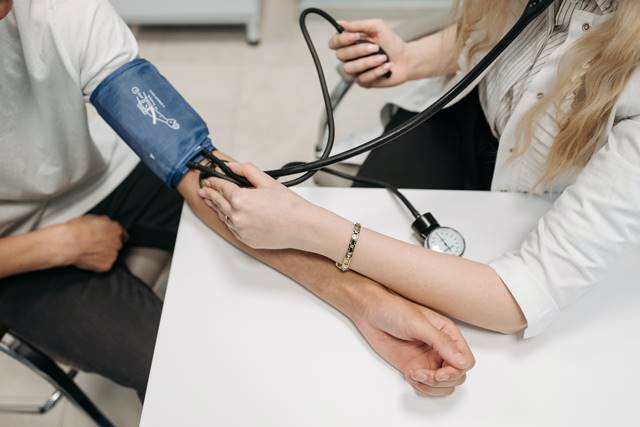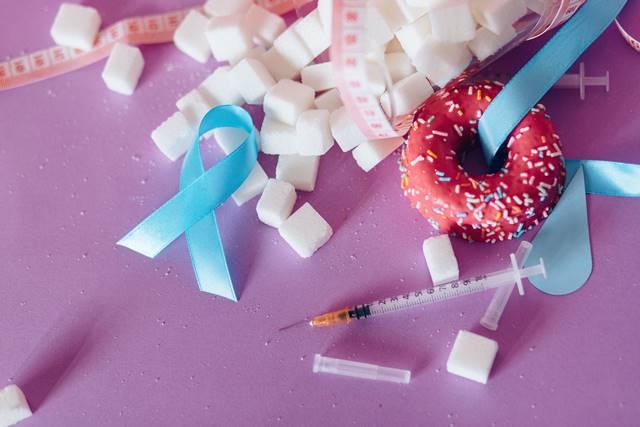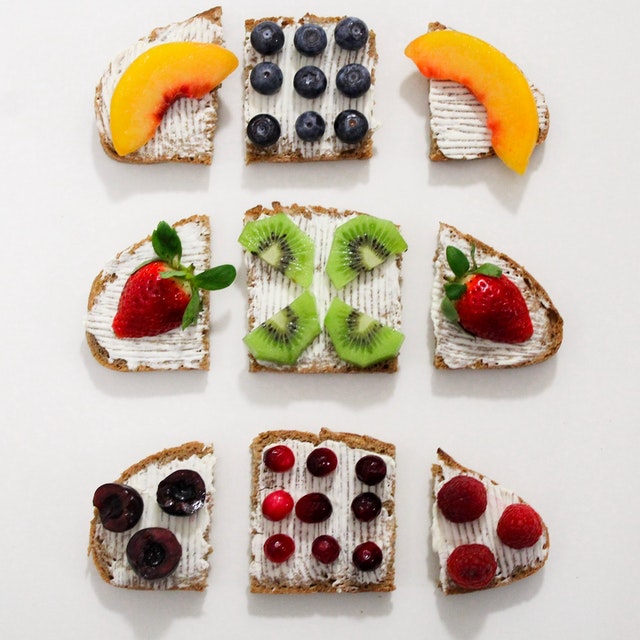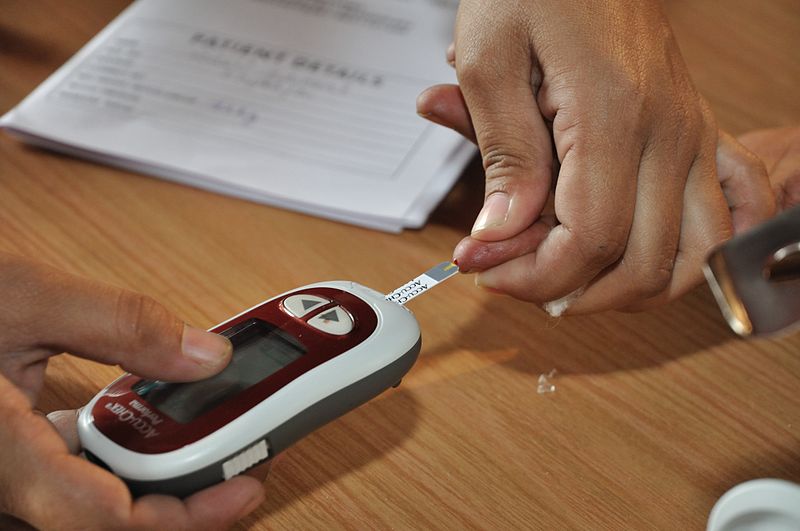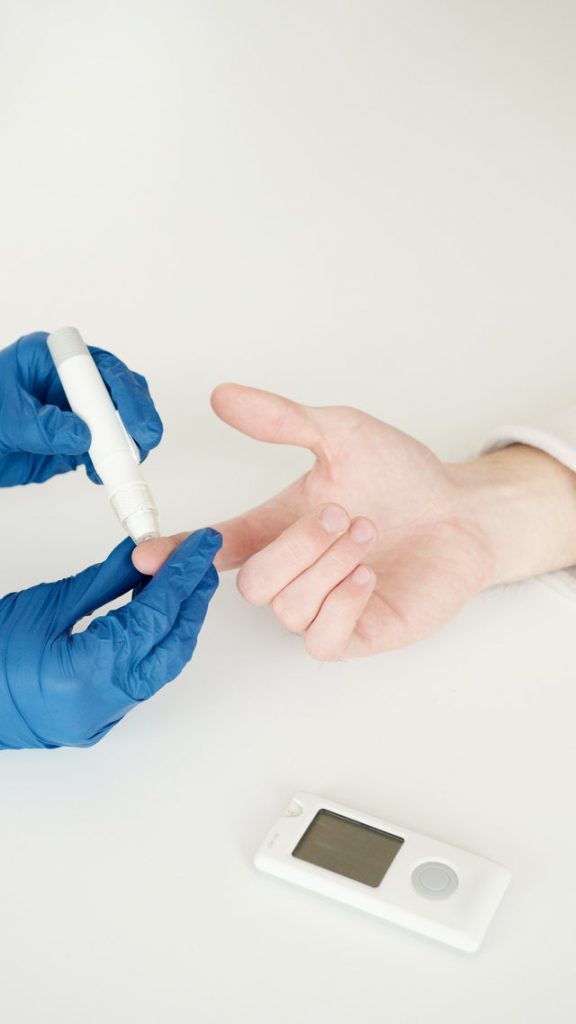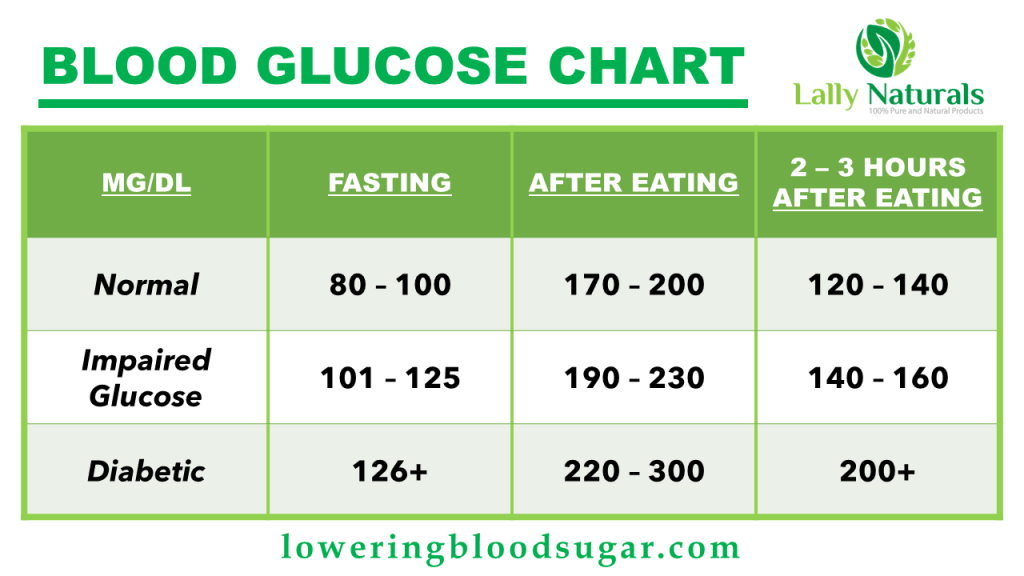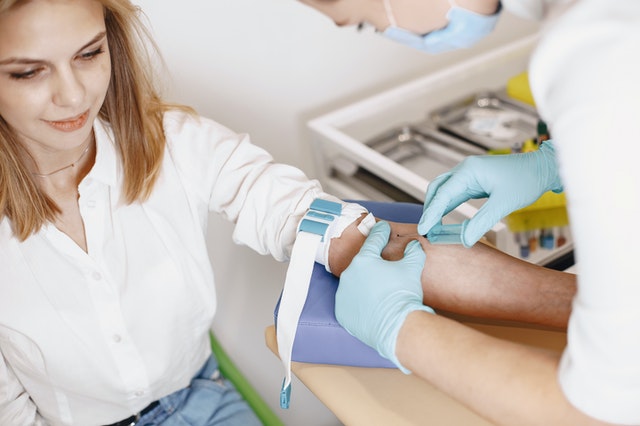Posts Tagged ‘blood sugar control’

Can Blood Sugar Affect Blood Pressure?
Yes! Most definitely.
To understand the entire process and the associated traits, we must first understand what blood sugars are in the human body and their functions.
Also referred to as blood glucose, these constitute the significant sugars found in the bloodstream. They are usually the major energy sources within the human cells, among other sugars and molecules like ketone bodies.
Blood sugar levels are usually of utmost significance to individuals, given that too low levels could prompt varied health conditions, including hypoglycemia. At the same time, too high levels could lead to hyperglycemia and associated symptoms.
The human body is thus equipped with sensory cells all over capable of detecting changes in blood glucose levels and effecting subsequent changes. For instance, if the blood glucose level goes above the optimal levels, the condition will be detected in the pancreas prompting the release of insulin hormone, which, in conjunction with other hormones, rectifies the surge.
Similarly, pancreatic cells will also detect low blood glucose levels, prompting the release of glucagon and even catecholamine hormones that collectively work to fix the condition by increasing blood glucose levels. The healthy average blood glucose level thus typically ranges between 70 and 120 mg/dL.
Extreme blood glucose levels are usually associated with the different types of diabetes. However, to advance to the diabetes stage must imply that the blood glucose level detection system, the alpha and beta cells of the pancreatic islets of Langerhans, and the associated hormones are functionally impaired.
Hence, individuals with diabetes don’t often lose the ability to regulate blood sugar levels but rather the cells and systems involved.
How Your Body Regulates Blood Pressure
Despite near similar processes exploited in maintaining blood glucose and blood pressure levels, regulating blood pressure is often more complicated and critical. For instance, the body usually regulates blood glucose levels by making more blood sugars or exploiting alternative energy sources.
However, there is no way of making more or breaking down blood instantly within the body to regulate blood pressure. In fact, the body cannot make more or less ‘blood pressure’ like it does blood glucose. As such, blood glucose regulation is often much simple and achievable, unlike blood pressure regulation for the human body.
Take, for example, an individual with low blood pressure from low blood volume cannot instantly rectify their condition as more blood would be needed, something the body can’t manage to manufacture fast enough as it is with blood glucose. These individuals can suffer massive health implications like incapacitation and long-term brain and body harm. This hints at the severity and dangers associated with blood pressure imbalances.
Therefore, due to the limited blood pressure regulation options, the body often utilizes the hormones used in blood sugar regulation, catecholamine/adrenalin, and other hormones to facilitate the process. As such, if you have low blood pressure, the body detects this and releases catecholamines. These subsequently tighten up the blood vessels through vasoconstriction, making them narrower and thus more challenging for the heart to pump blood through the arteries, ultimately raising the blood pressure levels.
On the other hand, high blood pressure usually warrants reducing the arterial pressure build-up by lowering the overall blood volume in the vessels. This is often achieved through several avenues.
First, some of the blood glucose regulating hormones like insulin stimulate nitric oxide production by the endothelial cells, which initiates the vasodilation/expansion of the blood vessels. This subsequently reduces the arterial pressure and the pressure against the heart.
Expanded vessels also release water through diuresis in the kidneys, further lowering blood volume and thus blood pressure. These are just some of the few standard blood pressure regulation processes.
Similar to diabetics, imbalance in blood pressure prompts conditions like hypertension and hypotension. These individuals often can regulate their blood pressure but have impaired sensors and body systems responsible for controlling blood pressure levels.
How Blood Sugar Affects Blood Pressure
The blood sugar and blood pressure regulation systems are all interconnected, given that they depend on similar body hormones to affect changes in the body. For instance, as indicated above, insulin, a hormone responsible for regulating blood glucose, is also associated with stimulating nitric oxide production in blood vessels.
It usually blocks the body’s ability to make nitric oxide which is significant for vasodilation of blood vessels and decrease in blood pressure. As such, if an individual with diabetes is utilizing insulin doses to facilitate blood glucose regulation, they should be aware of the underlying risks of high blood pressure, given that the body’s ability to lower blood pressure via nitric oxide production would be severely impaired.
Catecholamine hormones that regulate low blood pressure would also impact blood sugars by immensely raising the levels given the interconnected responses.
The same goes for low blood sugar individuals whose body systems utilize catecholamines to regulate the levels, subsequently prompting high blood pressure levels. This is a clear indication of how low blood sugar or low blood pressure could influence the rise/decline of the other.
It is also important to note that some blood pressure and blood glucose regulation medications may override the body’s natural protection systems and trigger these processes.
Can Diabetes Cause High Blood Pressure?
Diabetes and high blood pressure (hypertension) often go hand in hand as individuals suffering from one are often likely to suffer from the other. An individual with diabetes is thus often twice as likely to have high blood pressure as opposed to healthy folks.
The high blood sugar levels among diabetes patients can also often damage blood vessels and nerves of the heart, and these, when coupled with high blood pressure and associated symptoms, often result in increased strain on the heart muscles and blood vessels. This further increases the risk of heart/cardiovascular disease and even stroke.

As such, diabetes and hypertension often occur comorbidly, either at the same time or simultaneously. This is usually evident among populations as nearly one in every three American adults have hypertension.
Subsequently, two out of every three patients with diabetes usually have high blood pressure or take respective blood pressure regulating prescription medications. Further reports also indicate that diabetes often doubles one’s likelihood of dying from stroke or heart disease compared to those without diabetes.
Experts in the field also believe that both the conditions, diabetes and high blood pressure, often have common potential causes and risk factors. They have thus been linked to;
- Oxidative stress
- Insulin resistance
- Inflammation
- Obesity
Essentially, diabetes is associated with elevated blood sugar levels. High glucose levels often stress the vessels causing damage, narrowing, and accumulation of plaque such as cholesterol and fats within the vessel walls. These plaques further narrow the vessels making it difficult to pass adequate blood through. As such, the heart has to pump even harder to compensate for the narrowing leading to high blood pressure throughout the body.
Subsequently, the plaque formation and build-up due to the blood sugar levels further causes atherosclerosis, a condition which, when coupled with the high blood pressure, increases the risk of heart attack, stroke, and peripheral arterial disease for the associated individual.
Does Sugar Raise Blood Pressure Quickly?
People commonly associate salt with high blood pressure despite sugar also often playing a crucial role in blood pressure regulation. For instance, eating too much sugar may often inhibit nitric oxide production, eliminating vasodilation. This leaves an opportunity for vasoconstriction, which can result in high blood pressure. As such, sugar, just like salt, is also among the leading causes of high blood pressure.
Take fructose, for example, a simple sugar, which, upon ingestion, raises uric acid levels in the blood. High uric acid concentrations often inhibit nitric oxide production, which further eliminates flexibility and vasodilation capabilities of the blood vessels, prompting a rise in blood pressure.
Subsequently, excessive sugar consumption often leads to weight gain, and continued weight gain results in obesity. Since obesity is a major contributing factor to high blood pressure, increased sugar consumption thus raises blood pressure above optimal levels.
Sugars, more so added sugars, like table sugar and syrup, used in food preparation and processing have also been realized to contribute significantly to hypertension. This is because they are usually more harmful to human bodies, unlike the naturally occurring sugars in fruits and milk. Therefore, increased amounts above recommended range could result in high blood pressure.
Furthermore, hyperinsulinemia, a condition depicted by higher-than-normal levels of insulin in the blood, also contributes to high blood pressure if left untreated. Studies have actually shown that nearly half of high blood pressure patients often suffer from hyperinsulinemia or glucose intolerance.
The body often uses glucose for energy. However, with insulin resistance, associated individual systems often fail to respond to insulin as they should, prompting overproduction of the hormone to compensate for the high blood glucose and low energy levels. High insulin is usually associated with hypertension and together greatly increases the risk of heart disease and diabetes.
Bottom line
Diabetes and high blood pressure are among some of the diseases claiming many lives globally. As such, individuals should always endorse frequent health checkups to determine their status with regard to the conditions. Subsequently, those living with either or both conditions should also invest in a close monitoring program to prevent treatment challenges and prevent unnecessary health complications.

Controlling Diabetes with Diet
Controlling Diabetes with Diet – With a healthy diet and with regular exercise, diabetes can be controlled in a way that it won’t get any worse. Maintaining normal blood sugar levels can lessen the risk of having severe diabetes.
Controlling Diabetes with Diet, how? Here are a few general things you need to balance to have and maintain normal blood glucose levels:
- Taking prescribed medication for Diabetes
- Eating the right kind of food
- Doing regular exercise or any physical activity
Being able to manage these three basic things will definitely help achieve the optimal blood glucose levels.
What are Carbohydrates?
What is the role or what is the purpose of carbohydrates? Well, carbohydrates are the main source of energy for our body. About half of our daily calorie intake should have carbohydrates to have enough energy to get through the day.
What different food that are carbohydrates? These following carbohydrates break down into sugar in our blood:
- Bread
- Grains
- Starchy Veggies
- Fruits
- Dairy Products
- Sweets
Once the carbohydrates are broken down to sugar, the sugar gets stored and is as energy for the body. The presence of insulin is important in transporting the sugar to reach its designated storage area. Having too little insulin in the body will result in having high blood sugar levels. Controlling diabetes with diet is one of many ways to help reduce the risk of having severe diabetes.
Counting Carbohydrates? How does it work? Controlling Diabetes with Diet
Carb-counting (Carbohydrate counting) is the method of literally counting the amount of carbohydrates from the food or drinks you consume. Controlling diabetes with diet would include controlling how much carbohydrates you put in your body by distributing the amount evenly over your meals.
How do you know the amount of carbohydrates in your food or drink?
It is most probably listed on food labels at the back of the food packaging or it can be easily searched from the internet. It is better to read the labels including the serving size.
An example is 1 slice of toasted bread, with 1 teaspoon of peanutbutter, half of a regular sized banana, and 1 cup of regular milk is equivalent to three (3) carbohydrate servings or forty-five (45g) grams of carbs. (1 serving = 15 grams of carbohydrates)
Though google may provide a general idea of the amount of carbs in the food / drink you eat, having a registered dietitian by your side is definitely a bonus. A dietitian will help you with controlling diabetes with diet.
Are there Good and Bad carbohydrates?
The better carbs are those with a higher amount of fiber in them. Several research shows that getting right amounts of fiber regularly is beneficial for our health.
Fiber is a type of carbohydrate wherein fiber-rich foods will generally have more nutrients for the body. That explains why fiber is not in meat, fat and not even in dairy products. The following are examples of carbs with fiber are the following:
- Whole grain bread
- Whole grain cereals
- Whole grain pasta
- Brown Rice
- Barley
- Beans and Lentils
Fruits are also a great source of fiber. It is suggested that some fruits be eaten with their skin on. However, don’t forget to wash them. Fresh fruits and vegetables will always be better than canned ones. Less processed would mean more fiber.

What does Regular Exercise mean?
Controlling diabetes with diet would not only mean the regulation of food intake but also the amount of physical activity you do daily. With regular exercise (which would mean any physical activity such as dancing, home workouts, walking, gardening, etc), the following benefits will be achieved:
- Insulin Sensitivity Increases
- Promotes Healthy Bones
- Promotes healthy weight
- Improves Sleep
- Help lower blood glucose levels
It is always best to check with your doctor!
Controlling Diabetes with Diet

5 Ways to Control Your Blood Sugar Levels

Type II diabetes is the common type of diabetes that a lot of people suffer from. It’s what is otherwise known as the Adult Onset Diabetes. This happens when your body fails to efficiently utilize insulin.
Diabetes basically means that your blood glucose levels are higher than the normal level. Since your body fails to react to insulin properly, the glucose from the food that you ate will not be synthesized into energy which is needed by the cells in your body and instead, it stays in your bloodstream causing a high glucose levels in the blood. Overtime, when this problem is not addressed, it can lead to serious complications such as cardiovascular diseases, blindness, kidney failure, and problems with the nerves.
Ways to Avoid Blood Sugar Spikes and Dips
Although there are medicines that can help alleviate the symptoms, it’s always better to have a blood sugar support plan ready at hand. The best way to avoid the blood glucose spikes and dips is by changing your lifestyle. Here are 7 ways you can do to control your blood sugar:
1. Eat Nuts

Nuts are known to have healthy fats and have an effect on slowing down the body’s glucose absorption.
2. Exercise Regularly
Exercising has a lot of benefits – including regulation of blood sugar levels. Regular exercise helps you lose weight and is effective in increasing the body’s insulin sensitivity.
3. Include a Few Servings of Veggies on Your Diet
Vegetables such as broccoli, cucumber, and carrots contain less starch and are rich in fiber. These foods are a helpful blood sugar support while giving your body extra nutrients.
4. Manage Stress
When the body undergoes stress, the hormones that are released by the brain can cause blood sugar to rise. Research shows that a few minutes of meditation can help lower the blood’s sugar level.
5. Drink Lots of Water
Drinking lots of water can help in cleansing the body of excess sugar through urine. It’s also important to avoid drinks that are rich in sugar when you have a high blood glucose level.
Along with these tips on how to keep a normal blood sugar level, taking supplements such as Lally Naturals Blood Sugar Support can also help. Prevention is always better than cure so start taking baby steps to regulate your blood sugar level and avoid complications in the future.

Tips and Tricks to Keep Your Blood Sugar Level from Rising
Too high or too low sugar levels can lead to various complications and diseases. Usually when blood glucose is just a little bit over the border, mild symptoms could manifest. However, if it’s way above the normal level on a regular basis, you could have a chance developing a chronic disease. This is why recognizing the symptoms before it can develop into a full blown disease can be helpful in preventing the blood sugar from spiking up.
Hyperglycemia is the medical term used for when the person has a high blood sugar level. This happens when the body inefficiently uses insulin. And when insulin is not properly utilized, glucose (sugar naturally produced by the body and obtained from the food we eat) cannot be synthesized into a usable form of energy. As a result, a lot of this sugar stays within the bloodstream.
Ways to Keep Blood Sugar Levels Balanced
This is where blood sugar support comes in. Blood sugar support is needed to help the body regulate the glucose in the blood. Along with this, there are also other ways in which you can keep your blood sugar levels steady:
1. Spice up your meal

Cinnamon, cloves, rosemary, oregano, and other spices are good spice companions when you’re looking to decrease your blood sugar levels.
2. Add protein during meal time
The body tends to absorb proteins more slowly than any other food types. As a result, the bloodstream also absorbs glucose slowly. Proteins also help our satiety center satisfied for quite a while thereby reducing our sugar cravings.
3. Get Enough Rest and Sleep
Getting the recommended eight hours of sleep each night can help prevent blood glucose levels from rising. When you don’t get enough hours of a good night sleep, the tendency is that it makes it harder for glucose to work on cells causing them to stay in the bloodstream.
In order to notice a difference in your health, you would need to discipline yourself to do these blood sugar support tips and tricks. Start by incorporating one of these into your daily routine and your blood sugar levels will be as normal as it can be in no time.
If you’re not taking any supplements for blood sugar regulation, Lally Naturals Blood Sugar Supplements is made up of a mix of herbs such as cayenne, banaba, Gymnema sylvestre along with others that are great in helping your blood sugar level at bay.
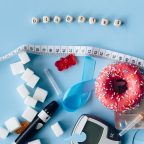
Fasting Blood Sugar and Chart
Fasting Blood Sugar and Chart – There are different tests for testing Blood glucose – Random or Fasting Tests.
Fasting Blood Sugar Test
Fasting Blood Sugar test means that no food or drinks (except for water) be consumed eight hours before the actual test. It is better to schedule the fasting test in daytime or first thing in the morning so that fasting won’t be hard since you were already in a fasting state when you were asleep.
Random Blood Sugar Test
Unlike the fasting test, this test allows you to eat and drink even right before the glucose test.
More Common: Fasting Blood Sugar Test
The fasting test is more common since this test is said to get much more accurate results compared to the random glucose test. In addition, fasting glucose test is easier to interpret. Fasting Blood Sugar and Chart
It is important that before the test starts, inform your doctor about all the medications you have been taking, both prescription drugs, over-the-counter-drugs, and even supplements whether herbal or not. Your doctor might ask to pause from taking your medications or just to change the dose before the blood glucose test. This is important to get accurate results since there are medications that may affect the body’s blood glucose levels.
Here are certain Medications that may affect blood sugar levels:
- corticosteroids
- diuretics
- birth control pills
- hormone therapy
- aspirin (Bufferin)
- antipsychotics
- lithium
- epinephrine (Adrenalin)
- tricyclic antidepressants
- monoamine oxidase inhibitors (MAOIs)
- ·phenytoin
- sulfonylurea medications
Blood sugar levels increases when a person gets stress from certain circumstances such as:
- surgery
- trauma
- stroke
- heart attack
You should tell your doctor if you’ve recently had any of these.
What happens during a Blood Sugar Test?
Blood sample is taken by using a device that merely pricks a finger to get that small blood sample. In other tests, blood from a mere prick is not enough that is why doctors would collect blood directly from a vein.
1. Before collecting the blood sample, the nurse/healthworker in charge would first clean the area where the blood is taken from, usually by wiping the area with cotton with alcohol to kill germs.
2. Second step uses a method that makes a vein visible. Usually, this method uses an elastic band to wrap around the upper arm. Once the vein is visible enough, a sterile needle will be inserted to collect the blood. It is important to relax your arm to reduce the moderate pain from the needle.
3. After collecting the blood, the nurse/healthworker removes the needle and covers up the skin with a band-aid.
4. The blood sample is then transferred to the laboratory to be tested. Fasting Blood Sugar and Chart
5. When the results are ready, the doctor will then discuss what’s in the result.
What are the Possible risks associated with a blood sugar test?
There is very little chance that people who get their blood tested develop health problems. Although the chances are very little, it is not definitely zero percent. Fasting Blood Sugar and Chart There are possible risks such as:
- multiple puncture wounds if it’s difficult to find a vein
- excessive bleeding
- lightheadedness or fainting
- hematoma, or blood collecting under your skin
- infection
Results of Blood Glucose tests
Normal Blood Test Results
The results depend on whether the test was the Fasting Blood Sugar test or the Random Blood Glucose Test. For the fasting blood sugar test, normal levels is between 70mg per deciliter and 100 mg per deciliter (mg/dL). On the other hand, the random blood sugar test levels are usually under 125mg per deciliter. However, the exact levels will still depend on what you ate last. Fasting Blood Sugar and Chart
Abnormal Blood Test Results
Again, the results depend on whether the test was the Fasting Blood Sugar test or the Random Blood Glucose Test. For the fasting blood sugar test, the results listed below will indicate whether there are signs of prediabetes or diabetes:
- A blood glucose level of 100–125 mg/dL indicates that you have prediabetes.
- A blood glucose level of 126 mg/dL and higher indicates that you have diabetes.
On the other hand, the random blood sugar test levels the results listed below will indicate whether there are signs of prediabetes or diabetes:
- A blood glucose level of 140–199 mg/dL indicates that you may have prediabetes.
- A blood glucose level of 200 mg/dL and higher indicates that you likely have diabetes.
If your random blood glucose test results are abnormal, your doctor will probably order a fasting blood glucose test to confirm the diagnosis or another test such as an Hgba1c.

High Blood Sugar Symptoms
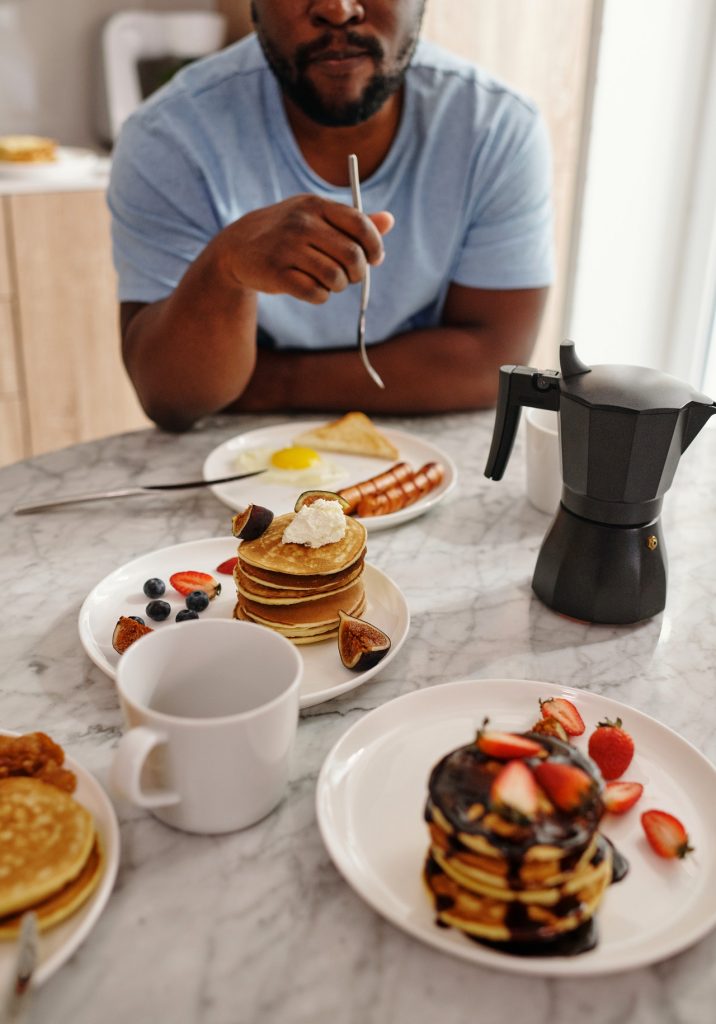
High Blood Sugar Symptoms – Naturally, human beings have sugar (also known as glucose) in the blood. Normal levels of blood sugar gives energy for the cells and organs in the body to function. However, having too much is bad.
Blood sugar is naturally produced from the liver and from the muscles in the body, however, most human beings get too much from food and drinks containing carbohydrates. Hyperglycemia is a condition wherein it means that there is way too much sugar in the blood. Having too much blood sugar (or having high blood glucose) means that the body lacks enough insulin to keep blood sugar levels at a normal state.
What is insulin?
Generally, insulin is a hormone that helps the body transform the foods or drinks we consume into energy. Insulin also helps directs blood sugar to be stored in the liver, muscles, and in fat.
Without enough insulin, blood sugar will not be stored or converted to energy, and instead, it will dangerously build-up which will cause serious health problems such as diabetes.
Hyperglycemia
What is hyperglycemia? What causes hyperglycemia?
Right amounts of blood sugar is fuel for the body. However, too much does not equate to more energy… in fact, too much blood sugar causes the opposite of having a boost in energy.
| High Blood Sugar (Hyperglycemia) What is hyperglycemia? What causes hyperglycemia? Right amounts of blood sugar is fuel for the body. However, too much does not equate to more energy… in fact, too much blood sugar causes the opposite of having a boost in energy. |
High Blood Sugar Symptoms
What does it feel like to have high blood sugar?
A number of high blood sugar symptoms can happen, such as:
– Drowsiness especially right after eating
– Have headaches or other aches in the body
– Thirsty or hungry all the time
– Difficulty in concentrating
– Blurry vision
– Feels bloated
– Urinates more often
– Wounds or skin injuries might take more time to heal

Caution: Low insulin and having high blood sugar levels can lead to diabetic ketoacidosis (DKA), which is a serious complication that will need urgent medical attention.
Common symptoms may occur, such as:
– Shortness of breath
– Rapid beating of the heart
– Breath might smell fruity
– Disorientation
– Vomiting
– Dehydration
– Comatose
Blood sugar levels may reach over 250ml/dL. High blood sugar symptoms may be experienced at any time of the day, even in the morning for those who are suffering from diabetes.
What are the effects of high blood sugar in the body?
High blood sugar can lead to various symptoms and complications in the body. The following are examples of high blood sugar symptoms:
1. Frequent Urination – High blood sugar goes into the kidneys and urine which makes you more thirsty even when drinking lots of water.
2. Causes Unexplained Weight Loss – Even when there is high blood sugar in the body, high levels will cause the body’s cells to not get the glucose they actually need for burning fat and muscle.
3. Feeling Numb and Feels Tingling – High blood sugar can cause numbness, burning sensation, or tingling in the parts of the body such as the hands, legs, and even the feet. This complication of diabetes happens because of the diabetic neuropathy that happens after many years of having high blood sugar levels in the body.
High blood sugar symptoms cause harm to the body which will lead to long term complications:
1. May cause Heart Attack or Stroke
2. May cause damage or loss of eyesight.
3 May cause Kidney Problems
4. May cause skin problems such as slow healing of wounds or infections
Prevention of Hyperglycemia (High Blood Sugar)
Here are the different ways or strategies to prevent Hyperglycemia:
– Regularly check blood sugar levels, especially when it is advised by the doctor
– Take insulin, again, when advised by the doctor
– Ask for dietary help from licensed dietitians or nutritionists to ask help what your best diet would be.
– Always be mindful and take precautions to avoid any infections or certain diseases
– Get regular exercise. Home exercise or go to the gym, either way.
– Get enough sleep and avoid way too much stress as much as possible by engaging in stress-reducing activities.
Fortunately, at this day and age, testing kits for checking blood sugar levels are readily available in the market and may be purchased and used at home. For a more accurate reading, it is best to check with your doctor.
Low blood sugar (hypoglycemia)
When does low blood sugar occur? Some of the factors that increases the risk of low blood sugar includes:
a. Being diagnosed with certain medical conditions
b. Taking certain medicationsExercising too much
c. Skipping meals or eats way too little
d. Taking too much insulin can also be one that causes low blood sugar.
Low blood sugar symptoms are:
– Feels weak
– Feeling hungry
– Feeling nervous or anxious
– Feeling the chills
– Feeling irritable
– Experiencing fast heartbeat
– Palpitations
To help with hypoglycemia, fruit juice or eating something sweet will help with the symptoms. For more information about your health, it’s best to consult with your doctor.
Type 1 Diabetes
As researched by the American Diabetes Association, 5% of the population which already has diabetes suffer from the type 1 diabetes.
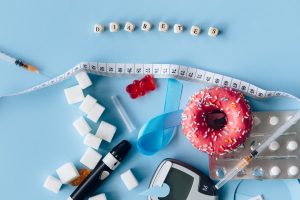
When the body lacks insulin, high blood sugar levels occur. Unfortunately, this happens because the immune system somehow attacks the cells in the body that produces insulin/ The cells in the pancreas produces the insulin we need in the body. If the body cannot naturally produce insulin, people, especially those with diabetes, would resort to take insulin through the methods medically available such as taking it via needle, a pen, or insulin pump. Insulin is vital in the body to keep blood sugar levels in the normal condition.
What causes Type 1 Diabetes?
In recent studies, researchers believe that people with a family history of type 1 diabetes is more likely to also be passed on to next generations. However, certain environmental factors such as viruses and infections may also cause the same.
Unfortunately, once diagnose with type 1 diabetes, there is no turning back. Dietary changes, regular exercise, or other healthy lifestyle choices will not undo it. It can happen at any time in our lives even during childhood.
Type 2 Diabetes
In this type, the body produces insulin but the problem is that the body is not able to utilize it. Yes, the pancreas makes insulin but cannot make enough to make sure the blood sugar level is at a stable or normal state. This effect is also known as “insulin resistance.” How should people take care of themselves when they have type 2 diabetes?
Taking insulin, proper medical pills, proper diet and exercise will definitely increase the chances to help manage blood sugar levels.
What causes Type 2 Diabetes?
Certain factors may cause to develop type 2 diabetes, such as the following:
- Certain genetics, especially when having a parent or sibling with type 2 diabetes
- Being overweight and being inactive most of the time
- Certain ethnicities are more prone to develop type 2 diabetes such as the African-American, Alaska Native, American Indian, Asian-American, Hispanic, or Pacific Islander ethnicity
- People who are over the age of 45 years
- People who have a blood pressure of 140/90 or higher
- Those who have low levels of good cholesterol or those who have high levels of triglycerides
Gestational Diabetes

What is gestational diabetes? This occurs when, during pregnancy, the body is experiencing insulin resistance and high blood sugar levels. It is most vital to constantly monitor pregnant women’s blood sugar levels, as it can lead to lots of health complications for both the mother and the child. After delivery, this type of diabetes usually goes away.
People who have high blood sugar or experiencing high blood sugar symptoms should visit their doctor. Each person is different and therefore have different reactions and experiences.
The Facts of Low Blood Sugar
Blood Sugar Control. Also known as hypoglycemia, low blood sugar may be a dangerous condition. Diabetics are prone to this condition especially those who takes medicine for increased insulin in the body. Too much of this medicines, eating less than normal, skipping meals, or too much exercise can lead to low blood sugar for diabetics.
Glucose or blood sugar is the main source of energy for the body which comes from the food we eat. The body’s main source of glucose is carbohydra tes such as potatoes, bread, cereal, rice, vegetable and milk. This glucose is absorbed into your bloodstream and to your cells wherein tit is converted to energy with the help of insulin hormone produced by the pancreas. Excess glucose are stored in your liver and muscles or are converted into fat and used for energy when needed. Your body needs glucose for it to function normally. A drop of your glucose level needs immediate treatment to prevent more serious development of symptoms.
tes such as potatoes, bread, cereal, rice, vegetable and milk. This glucose is absorbed into your bloodstream and to your cells wherein tit is converted to energy with the help of insulin hormone produced by the pancreas. Excess glucose are stored in your liver and muscles or are converted into fat and used for energy when needed. Your body needs glucose for it to function normally. A drop of your glucose level needs immediate treatment to prevent more serious development of symptoms.
Symptoms of low blood sugar includes blurry vision, sudden nervousness and mood swings, unexplained fatigue, headache, pale skin, shaking, hunger, dizziness, skin tingling, difficulty in sleeping, loss of consciousness, seizure, coma, sweating, and trouble concentrating. Hypoglycemic persons may not notice that their blood sugar has dropped. Very low blood sugar is a medical emergency and needs immediate medical treatment to prevent eventual seizure, faintness or even coma.
 Causes of low blood sugar include diabetes. Diabetes uses insulin to manage their blood sugar levels. And takes medicines that increase insulin and treatments to help the body use the glucose in the blood. Too much of these medicines may result in dropping of blood sugar at a very low level. Skipping meals, eating later than usual and eating less than normal but taking medicine at the normal time can also result to low blood sugar levels. In addition, drinking alcohol, excess and unplanned physical exercise also causes the drop of blood sugar.
Causes of low blood sugar include diabetes. Diabetes uses insulin to manage their blood sugar levels. And takes medicines that increase insulin and treatments to help the body use the glucose in the blood. Too much of these medicines may result in dropping of blood sugar at a very low level. Skipping meals, eating later than usual and eating less than normal but taking medicine at the normal time can also result to low blood sugar levels. In addition, drinking alcohol, excess and unplanned physical exercise also causes the drop of blood sugar.
Other causes of blow blood sugar include quinine medicine, hepatitis or kidney disorders, endocrine disorders and tumor which produces excess insulin.
Snacks made of carbohydrates like granola bars, fresh or dried fruits, cookies and pretzels should be on hand for in case your blood sugar levels are too low. Glucose tablets or glucagon are also available that could raise blood sugar at a faster rate.
It is best to regularly check your blood sugar control to prevent episodes. Bring with you at all times carbohydrate-rich snacks in case of emergencies outside your home. Be sure to eat your meal before doing your exercise because it uses up energy and may cause blood sugar to drop. And finally, follow your doctor’s advice on how to manage your blood sugar and check with him often to maintain your health and avoid unwarranted emergencies and complications.
The Facts of Low Blood Sugar
Blood Sugar Regulation
Blood sugar regulation is the process by which blood sugar is maintained by the body.
Here are some recent discussions on this topic:
Originally from : http://stcharleshealthandwellness.com/is-it-blood-sugar/
Is it Blood Sugar?
I am amazed how many times blood sugar dys-regulation, the inability for our bodies to properly regulate our blood sugar levels, is one of the most significant factors or drivers in the patients we see! If we got together with a group of friends, we would likely find three or four reactive hypoglycemics, five with insulin resistance, two pre-diabetics and a few with diabetes. While the particulars of these diagnosis are not important for this discussion, what is important is people with blood sugar issues are literally everywhere!
Originally from : http://juice4life.com.mx/juicing_recipes/2013/08/swiss-chard-the-blood-sugar-regulation.html
Swiss Chard the Blood Sugar Regulation
The reason Swiss Chard is so colorful is because it is one of the most antioxidant-rich foods on the planet. Swiss Chard is an excellent source of 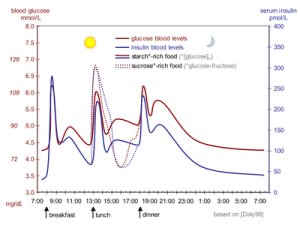 nutrition that includes a lot of vitamins and minerals.
nutrition that includes a lot of vitamins and minerals.
It contains syringic acid which help to regulate blood sugar levels. If you have been diagnosed with diabetes, you should drink the juice of Swiss Chard.
Originally from : http://www.botanicchoice.com/blog/herbs-naturally-support-healthy-blood-sugar/
Natural Herbal Support
When it comes to natural remedies to promote healthy blood sugar, each of cinnamon and blueberry leaf are irrevocably linked as go-to herbal support. As natural supplements, the connection between cinnamon and blood sugar as well as blueberry and blood sugar is not scientifically proven. Yet, thousands of people consume them daily to maintain health blood sugar already in the normal range successfully each year with tasty results.
Originally from : http://www.chooselife2live.com/blood-sugar-regulation/
Blood Sugar Regulation
Stress and trauma send our bodies out of regulation. When under these conditions our bodies will react in certain ways including anxiety, depression, bipolar disorder, migraines, seizures, addictions, and other neurological problems. All people respond in different ways based on their genetics and surroundings. One of the main reasons for these common conditions is unregulated blood sugar levels.
When you know you are under stress, be aware of sugar and carbohydrate cravings, sugar intake, and carbohydrate intake because eating these foods will only make the stress worse. Concentrating on increasing proteins and fats, adding B vitamins and decreasing high glycemic foods and sugars can help stabilize adrenals and hormone regulation.![]()
![]()
![]()
![]()
![]()
![]()
